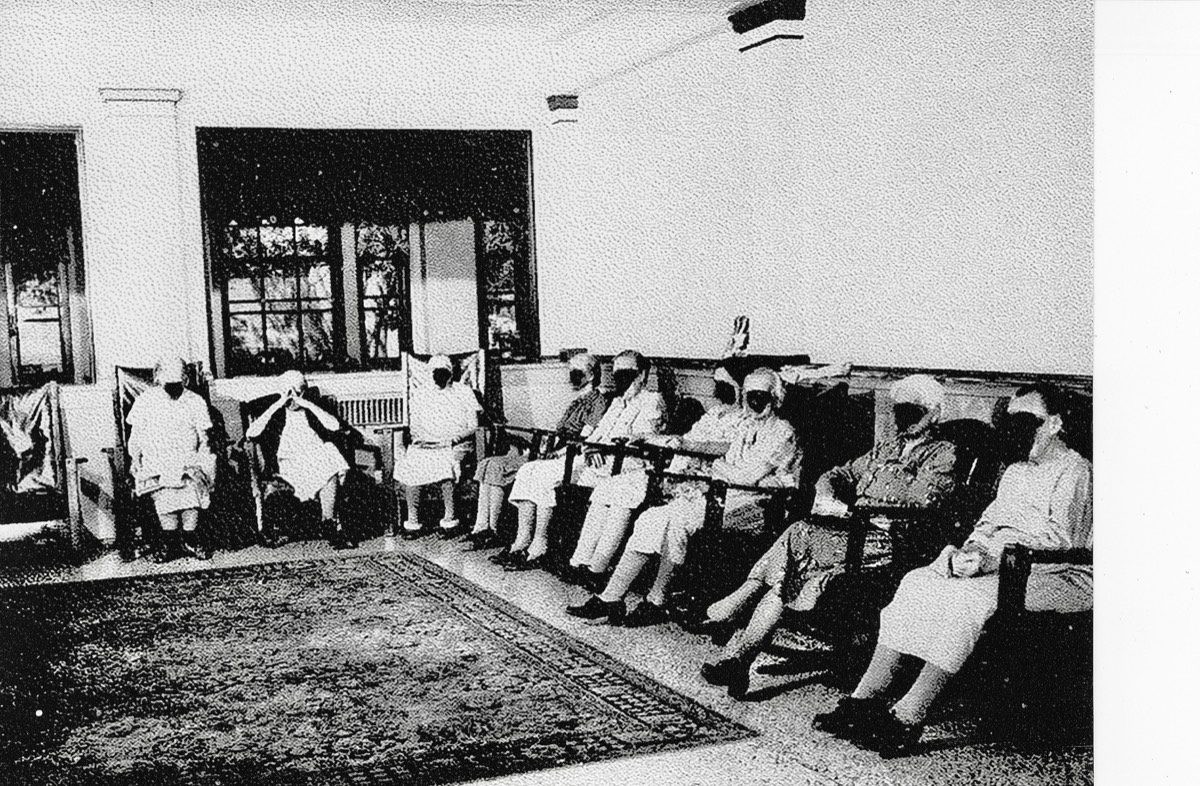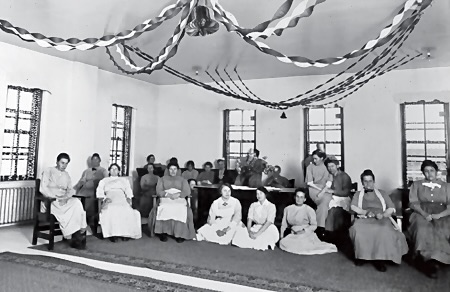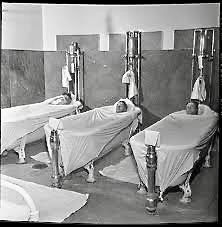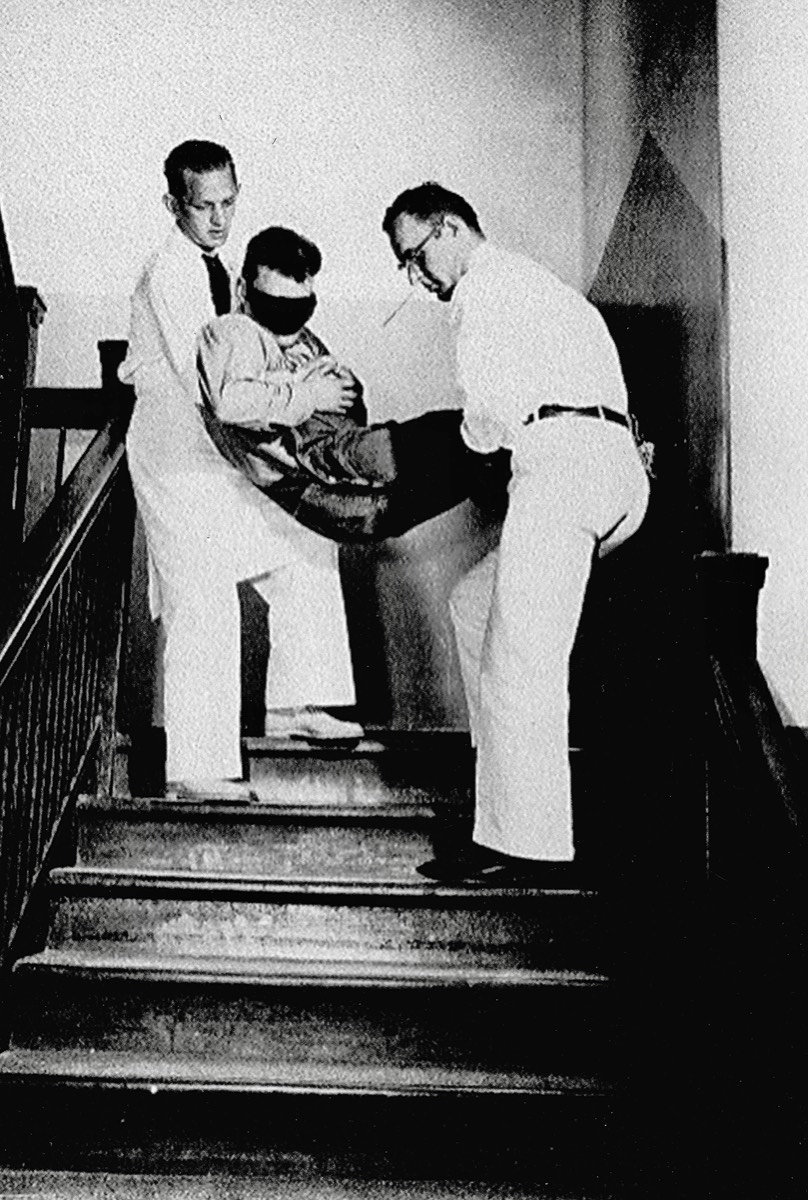Patient Treatment through the Years
Psychiatric care in 1885 relied primarily on work, leisure, and confinement. Dr. Archibald, the first superintendent, chose the cottage design for the hospital setting to imitate a community. The hospital quickly planted gardens for food and pleasure and purchased farm animals for food and meaningful work.

The hospital board required the hospital to produce their own milk and food and sew their own bedding, uniforms, and medical supplies. For more than 50 years the hospital also made their own mattresses and wicker furniture. A centralized kitchen, sewing room, and laundry produced multiple patient jobs that were seen as part of treatment and recovery.

The first amusement hall, built in 1886, created space for plays, music, and exercise. A full-time amusement instructor was hired in 1888 and a bowling alley was added to the Amusement Hall. Staff members The baseball team and orchestra, initially all staff, Although the baseball team and orchestra were initially made up of staff, all staff were replaced with patients as the hospital population grew.
Volunteer services were developed in 1890, bringing the community to the hospital to organize events, celebrate patient birthdays, and seek clothing donations for needy patients.
Volunteer services were developed in 1890, bringing the community to the hospital to organize events, celebrate patient birthdays, and seek clothing donations for needy patients.
Vocational services were expanded in 1896 with the establishment of occupational therapy. Occupational therapy organized, standardized, and expanded meaningful occupations. Needlepoint, weaving, and carpentry were added to possible occupations. Patients performing planting, harvesting, janitorial, butchering, milking, cooking, and sewing, all expanded as the patient population grew to overcrowding.
Spiritual care was considered important and identified as part of treatment. By 1896 a formal spiritual program was developed with local priests and pastors. In spite of a rich spiritual program, the hospital did not have a formal chapel until 1962.
Spiritual care was considered important and identified as part of treatment. By 1896 a formal spiritual program was developed with local priests and pastors. In spite of a rich spiritual program, the hospital did not have a formal chapel until 1962.

Exercise, occupation, and spiritual care continued as the primary source of treatment until 1914 when hydrotherapy, electrotherapy, and limited medications became available. Dr. Hotchkiss, in a 1916 biennial report, wrote, “[I]n time work will be considered a most important therapeutic measure and every sanitarium…will have many standardized occupations, and not play occupations, but the real thing.
In 1922 the hospital constructed a 9-hole golf course. This same year the original amusement hall collapsed and required the construction of a new one. The new hall, opening in 1924, had the capacity to hold 800 people and had a built-in movie projector, stage, and full-size basketball court.
In 1922 the hospital constructed a 9-hole golf course. This same year the original amusement hall collapsed and required the construction of a new one. The new hall, opening in 1924, had the capacity to hold 800 people and had a built-in movie projector, stage, and full-size basketball court.
Bookbinding was added to occupational therapy in 1926. Monthly newsletters were published and became a source of education and communication for staff and patients.

Electroconvulsive therapy (ECT) was invented in Italy in the late 1930s and became available in the North Dakota State Hospital in 1941. Records from 1950 identify that 829 patients received shock therapy (ECT) and 453 patients received more than 15,000 hydrotherapy treatments.
By the 1950s the use of psychiatric medications expanded. This dramatically changed the course of treatment and allowed many patients to leave the large institutions. NDSH, in response to this, started an outpatient department to assist more patients in returning home and continuing necessary medications.
By the 1950s the use of psychiatric medications expanded. This dramatically changed the course of treatment and allowed many patients to leave the large institutions. NDSH, in response to this, started an outpatient department to assist more patients in returning home and continuing necessary medications.
The North Dakota State Hospital and Museum Project works for the continued existence of the museum and to collect and make public more information about the hospital's history.
Contact Us